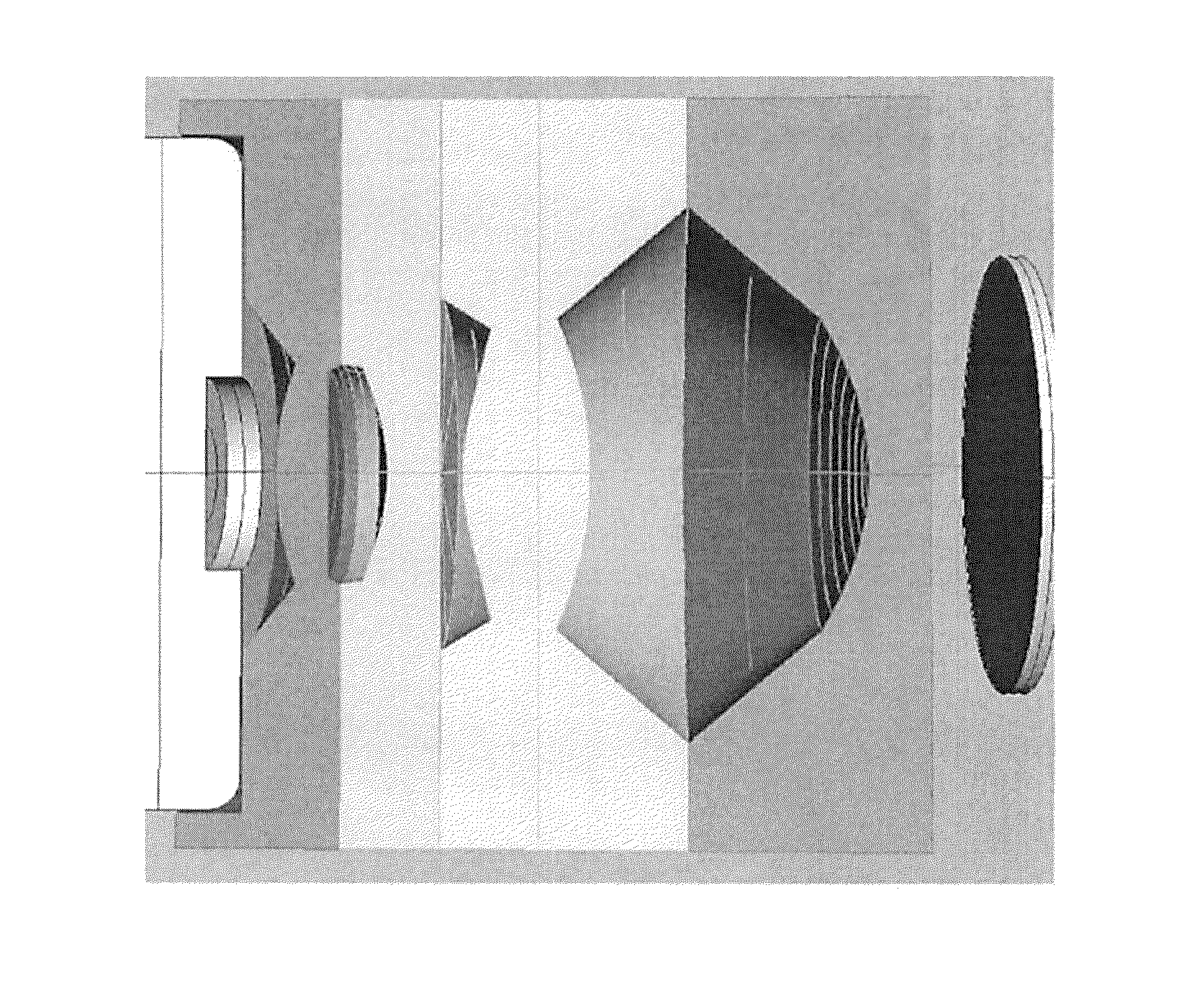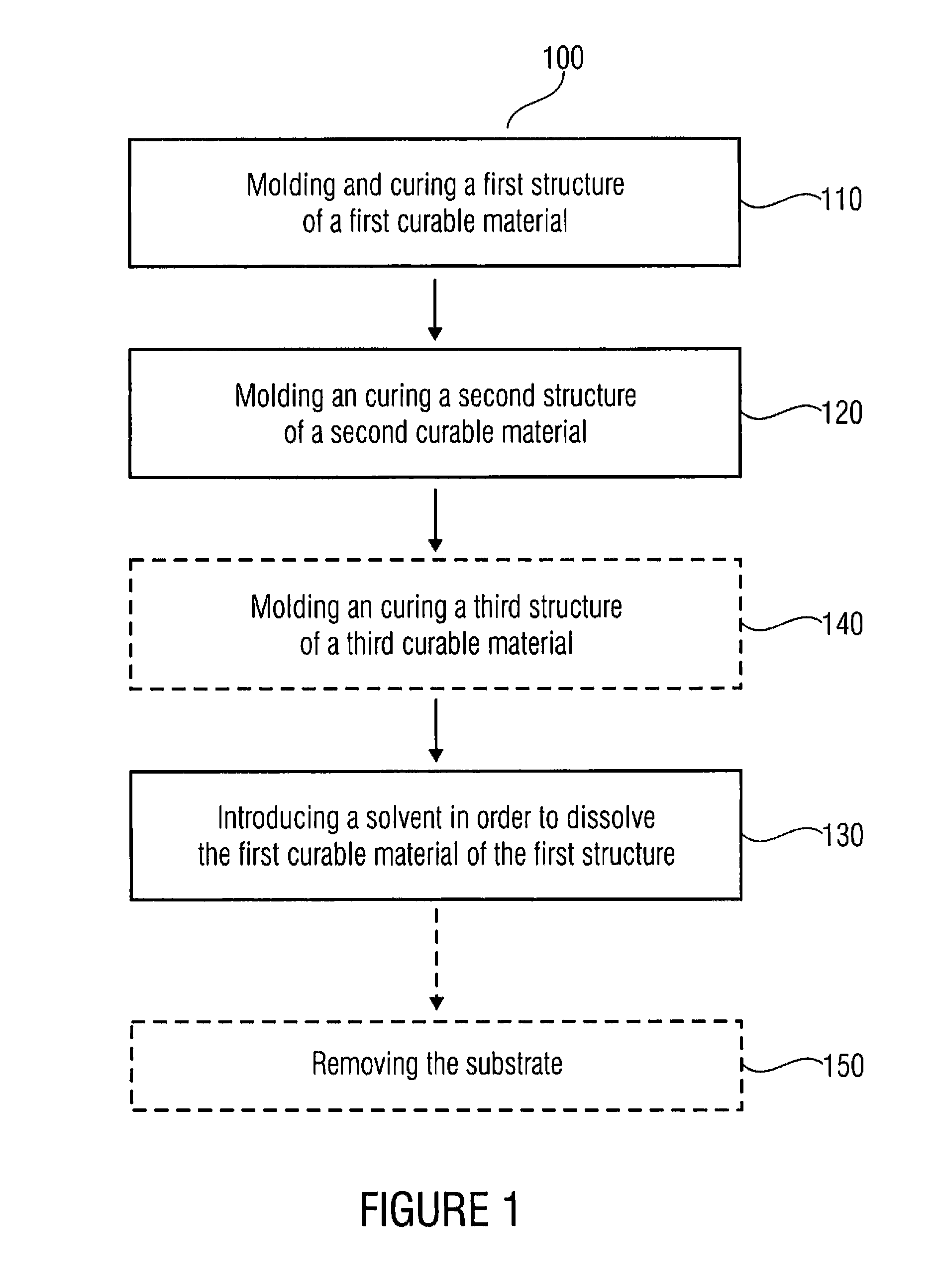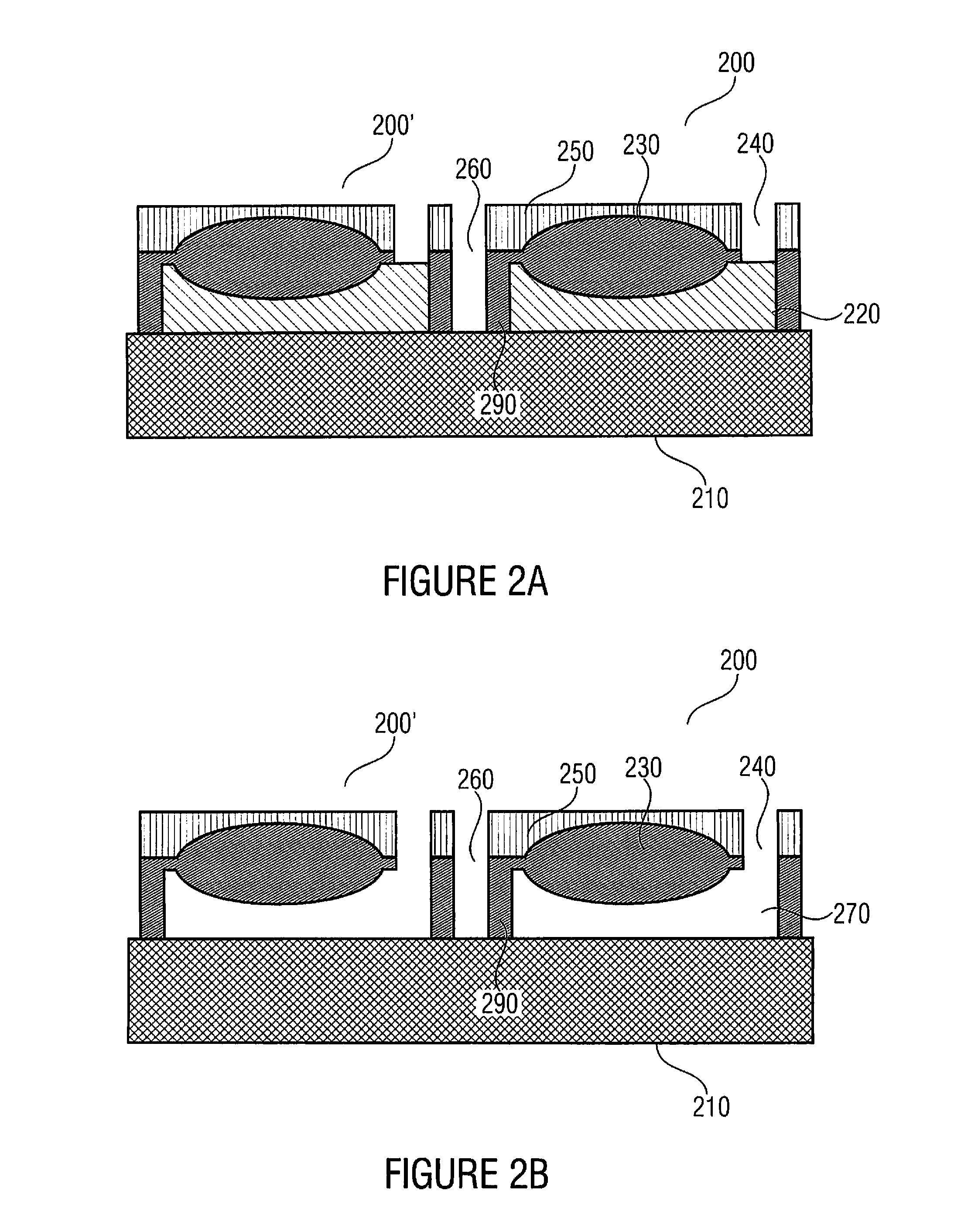Method for Manufacturing a Structure, Optical Component, Optical Layer Stack
a manufacturing method and technology of optical microstructure, applied in the direction of optics, mountings, lenses, etc., can solve the problems of increasing the building length of optics, optical imaging errors, and stacking several lens wafers on top of each other with high precision, and achieves low deflection or bending, high lateral and axial precision of optical microstructure, and cost-effective
- Summary
- Abstract
- Description
- Claims
- Application Information
AI Technical Summary
Benefits of technology
Problems solved by technology
Method used
Image
Examples
Embodiment Construction
[0043]Before the invention is explained in more detail in the following with reference to the drawings, it is noted that like elements in the figures are provided with the same or similar reference numerals and that a repeated description of these elements is omitted.
[0044]FIG. 1 shows a flowchart of a method 100 for manufacturing a structure of curable material according to one embodiment of the present invention.
[0045]The method 100 includes a first step 110 of molding and curing a first structure of a first curable material on a substrate. Molding and curing may here be executed selectively regarding the location, so that a first area of a surface of the substrate is exposed.
[0046]Further, the method 100 includes a second step 120 of molding and curing a second structure of a second curable material on a first surface of the first structure facing away from the substrate so that at the first surface a boundary surface between the first structure and the second structure is formed...
PUM
| Property | Measurement | Unit |
|---|---|---|
| diameter | aaaaa | aaaaa |
| optical structure | aaaaa | aaaaa |
| wavelength range | aaaaa | aaaaa |
Abstract
Description
Claims
Application Information
 Login to View More
Login to View More - R&D
- Intellectual Property
- Life Sciences
- Materials
- Tech Scout
- Unparalleled Data Quality
- Higher Quality Content
- 60% Fewer Hallucinations
Browse by: Latest US Patents, China's latest patents, Technical Efficacy Thesaurus, Application Domain, Technology Topic, Popular Technical Reports.
© 2025 PatSnap. All rights reserved.Legal|Privacy policy|Modern Slavery Act Transparency Statement|Sitemap|About US| Contact US: help@patsnap.com



